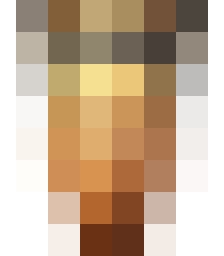
Observe the figure on the top right. It’s just a number of brownish blocks. Click once on the button ‘finer’. Recognisable now? Perhaps if you deliberately blur the image, by screwing up your eyes or squinting? Yes, still too difficult. Go finer, and try after every step if it becomes recognisable via blurring.
This demonstration is based on the “Lincoln illusion” first reported by Harmon & Jules 1973. More generically it’s referred to as “block masking”. Since you have some training now, try blurring the black and white figure on the left. Another well-known face? Well, that was easy, since you were (or your visual system) was primed. BTW, Leon Harmon took that image from a 5$ bill (see picture at the bottom).
The high spatial frequencies of the block edges reduce the signal-to-noise ratio for the ‘real’ content, the face (could be something else but a face, of course). Blurring acts as a low-pass filter, reducing the high masking frequencies. In this respect the present phenomenon differs from “Blur and picture content”, because there the high spatial frequencies don’t just mask, they also contain content.
Dali painted “Gala contemplating the Mediterranean Sea, which at 30 meters becomes the portrait of Abraham Lincoln (Homage to Rothko)” in 1976. It is currently displayed in the museum in Figueras, where it is indeed possible to observe the painting from a distance of more than 30 m. At that distance it needs only a little additional blur to recognise Lincoln again (move the mouse over the image). As an additional cue, Dali inset the original figure from Harmon & Julesz into his painting at the bottom. So 3 years was the turn-around time from science into art…
Harmon LD & Julesz B (1973) The recognition of faces. Scientific American 229(5):71–82
Harmon LD & Julesz B (1973) Masking in visual recognition: Effects of two-dimensional filtered noise. Science 180:1194–1197
Tyler C (2014) Bela Julesz – Biographical Memoirs (with a story gem on this picture)
A Short History of PhotoTiled Pictures
Interactive block masking by Akos Feher
